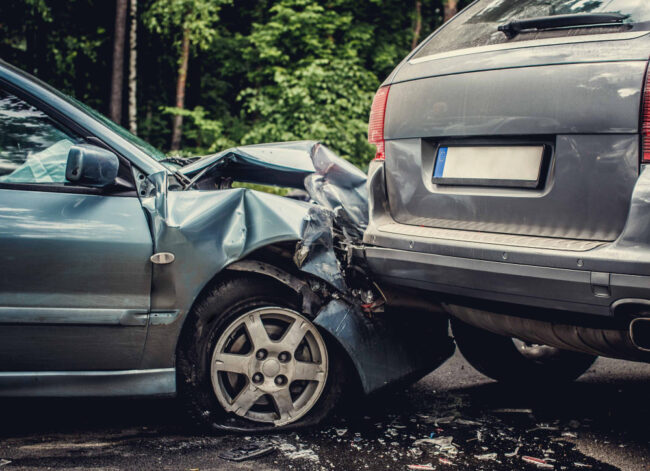The recent legislative changes in Colorado have significantly altered the landscape for personal injury claims. Starting in 2025, Colorado’s damage caps for personal injury cases will nearly triple, offering plaintiffs greater potential compensation. This shift marks a pivotal change for both individuals seeking justice and for businesses navigating new legal challenges.
The law, set into motion by House Bill 24-1472 and signed by Governor Jared Polis, reflects a crucial adaptation in the state’s approach to personal injury and wrongful death claims. The increased caps are expected to benefit injury victims by providing a more substantial financial cushion, aligning Colorado more closely with other states that have already raised their damage limits.
This transformation in the legal framework is geared to impact not just the amounts awarded in lawsuits but also how cases are pursued and settled. The periodic increase of these caps, with adjustments for inflation starting in 2028, signifies a dynamic shift that both plaintiffs and defendants need to understand. For more detailed insights, these changes can be explored further through the lens of the significant increase in Colorado tort damages caps.
Contents
Overview of Colorado’s New Damage Caps
Colorado has recently implemented changes to its damage caps, impacting the landscape for personal injury claims. The adjustments aim to better compensate victims while balancing the interests of all parties involved.
Legislation Changes and Effective Dates
Governor Polis signed the Colorado House Bill 24-1472 on June 3, 2024. This legislation significantly modifies damage caps for personal injury and wrongful death cases.
Starting January 1, 2025, these new caps will come into effect, raising the limits on what victims can receive in various types of damages. For example, the cap for noneconomic damages will increase to $1.5 million, affecting claims filed on or after this date. The wrongful death damages limit will also see changes, with an increase to $2.125 million.
These changes reflect a broader move to modernize injury claim limits, providing victims and their families with potentially greater compensation avenues.
Types of Damages Affected
The new legislation affects several categories of damages, most notably noneconomic and wrongful death damages. Noneconomic damages include aspects like pain and suffering, emotional distress, and loss of companionship. With the new cap set at $1.5 million, claimants can expect improved compensation levels.
In wrongful death cases, especially those classified as felonious killings, the previous caps of $679,990 are being raised or removed. The wrongful death damages cap will now be set at $2.125 million, providing families more substantial financial redress.
These adjustments in damage caps aim to enhance the fairness and equity of Colorado’s legal system for injury victims.
Understanding Damage Caps
Damage caps in Colorado regulate the maximum compensation a plaintiff can receive in personal injury cases. These caps differ for economic and non-economic damages, providing predictability for defendants while posing potential limitations for plaintiffs. There are also specific situations that allow exceptions to these caps, making understanding Colorado’s new injury claim limits crucial.
Economic vs Non-Economic Damages
In personal injury claims, damages are categorized as either economic or non-economic. Economic damages pertain to tangible monetary losses like medical bills, lost wages, and rehabilitation costs. These costs can generally be calculated directly from bills and financial statements.
Non-economic damages involve more subjective and intangible losses. This category includes compensation for pain and suffering, emotional distress, and loss of enjoyment in life. Such damages are not as easily quantifiable and are more likely to be subject to statutory limits. In Colorado, new legislation raised the cap for non-economic damages to $1.5 million, effective January 1, 2025. This increase aims to better compensate plaintiffs for these significant yet less tangible losses.
Exceptions to Damage Caps
Colorado law does include exceptions to its damage caps, allowing certain cases to bypass the statutory limits. These exceptions are primarily applicable in cases of felonious killing, where no cap is imposed on damages.
Other scenarios that could prompt an exception involve gross negligence or willful misconduct by the defendant. In these cases, plaintiffs may argue for damages exceeding the typical limits due to the aggravated nature of the harm caused. These exceptions ensure that in severe cases, rightful and sufficient compensation can still be pursued, reflecting the severity of the defendant’s actions.
Impact on Plaintiffs and Legal Proceedings
Colorado’s new damage caps will lead to significant changes in the strategies adopted by attorneys for both plaintiffs and defendants. The increased caps, set to take effect in 2025, will likely shift the dynamics of how personal injury cases are approached and resolved.
Case Strategy Adjustments
Attorneys representing plaintiffs are expected to reassess their case strategies due to the substantial increase in damage caps. The potential for higher financial compensation may encourage more detailed investigations and thorough documentation of injuries and related impacts. This proactive approach can maximize recoverable damages and address any potential challenges from the defense.
Furthermore, the changes allow siblings to file wrongful death claims, broadening the scope of who can seek damages. This expansion may lead to more comprehensive familial claims, requiring attorneys to prepare for additional testimonies and evidence presentation.
Negotiation and Settlement Considerations
The anticipated increase in potential compensation will have attorneys and insurance companies revisiting negotiation strategies. The heightened caps provide an opportunity for plaintiffs to negotiate larger settlements, shifting the balance in favor of injured parties seeking compensation. Experienced attorneys will be assessing the likely verdict amounts to support increased demands during negotiations.
This shift may result in higher settlement amounts outside of court, as defendants might prefer to avoid the risk of larger awards being decided by a jury. The altered legal landscape signifies a move towards more assertive demands from plaintiffs’ side, pushing for settlements that fully reflect the increased caps dictated by the new legislation.
Preparing for a Personal Injury Claim in Colorado
Preparing for a personal injury claim in Colorado involves strategic steps. Key components include meticulous documentation of incidents and securing knowledgeable legal representation to navigate the upcoming legal landscape.
Documentation and Evidence Gathering
Thorough documentation is crucial. This includes collecting all relevant medical records, police reports, and witness statements. Taking photographs of injuries and accident scenes can also be vital. Keeping a detailed record of expenses related to the injury, including medical bills and lost wages, will bolster the claim. Consistent documentation ensures that all aspects of the injury and its impact are accounted for.
It’s also beneficial to maintain a personal diary describing pain levels, medical treatment, and any lifestyle changes due to the injury. This personal account provides a comprehensive view of the injury’s impact. Organized documentation supports the claim and enhances credibility in legal proceedings.
Finding Legal Representation
Securing effective legal representation is pivotal. Consulting a lawyer experienced in Colorado’s personal injury laws can significantly influence the case’s outcome. An experienced attorney understands the nuances of the legal system and the new damage caps set to take effect in 2025.
When selecting an attorney, consider their track record in personal injury claims and whether they have handled similar cases. A good lawyer will provide a clear strategy, communicate effectively, and offer a transparent fee structure. This relationship is fundamental in navigating the complexities of a personal injury claim in Colorado.




